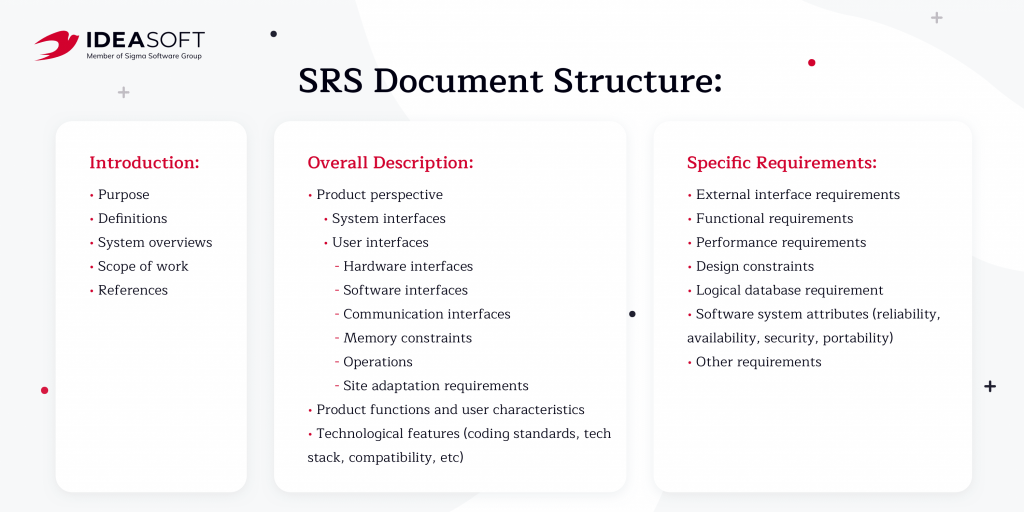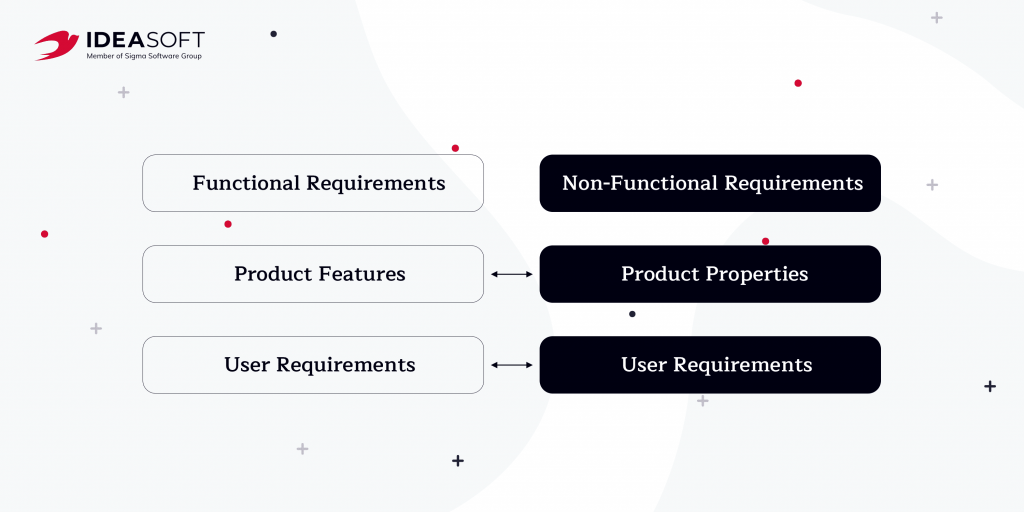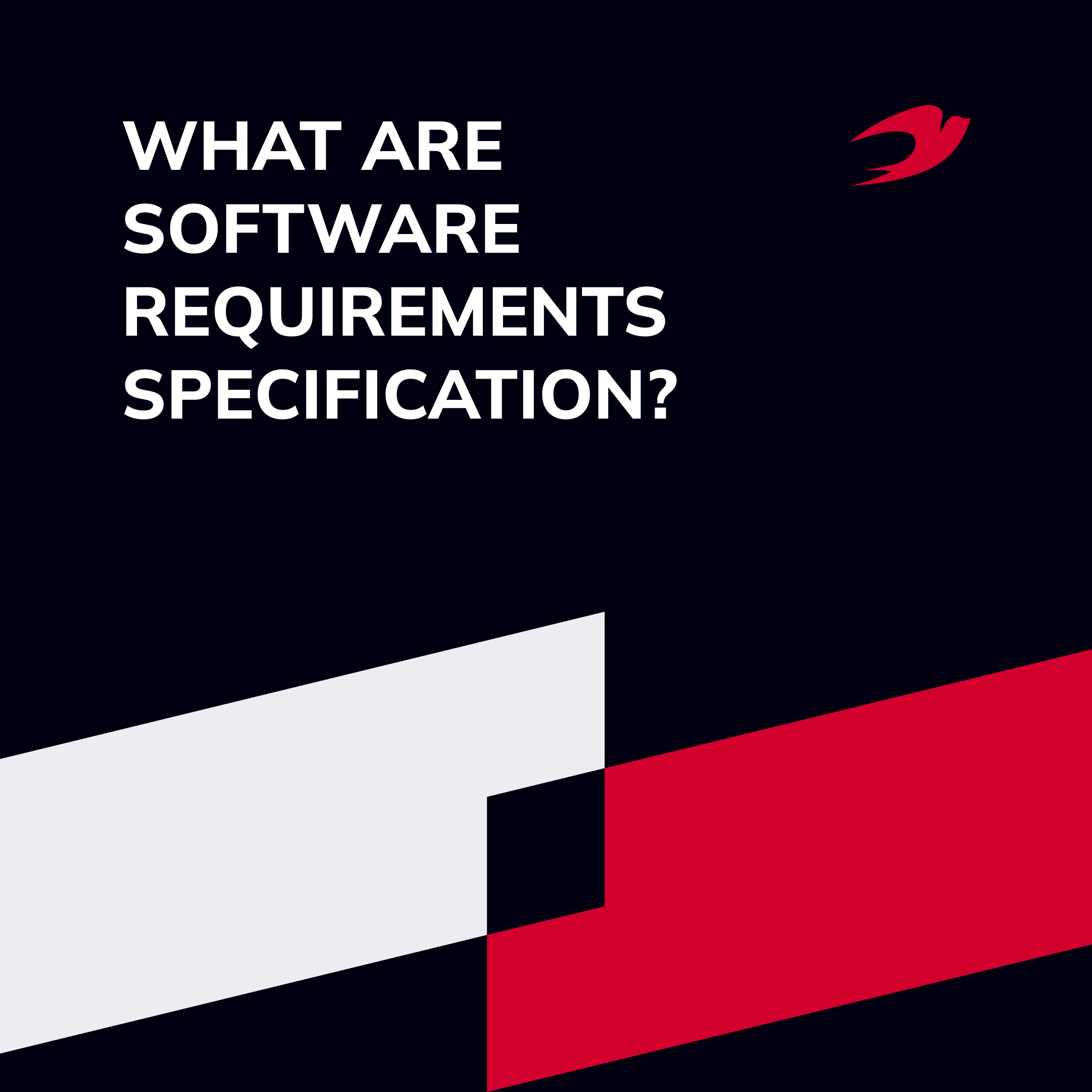When developing a software project, it is always a good idea to start by analyzing its goals and planning the development stages. That’s where you need a software requirements specification. The SRS is one of the most important documents in software development. It is the basis of the project that allows you to choose the right direction of the development, define the roles of the participants in the process and minimize the cost and time of creating a software product. In this article, we’ll explain in detail what the SRS includes and how to write a software requirements specification.
Table of contents:
- What is a software requirements specification (SRS) and why is it important?
- Key elements of an SRS document
- Functional vs non-functional requirements
- How to write a software requirement specification document?
- Wrapping up
What is Software Requirements Specification (SRS) and why is it important?
A software requirements specifications (SRS) is not just an important document, it is an appendix to a contract or agreement on the cost and timing. SRS is the subject of the contract and an integral part of it. It reflects all the important parts of the development, prioritizes tasks, and identifies ways for its’ technical implementation. It is safe to say that a well-developed SRS is a basis for the successful implementation of a project.
It may seem that it is enough to outline the requirements for the project as a whole, or individual tasks, and send them to the developer’s email. Of course, it is great when you have a fixed idea of the future project or an idea of the concept, it facilitates and speeds up the process of drawing up an SRS, but it can’t replace it.
For example, the client says: “I need an online store with a catalog of products, an order form, a shopping cart, the ability to pay online, information about the company, and contacts section”, while presenting an image that has been formed in his or her mind. At the same time, the developer can see the project 100% differently than the way the client sees it. An SRS document helps develop a common vision of the project.
To avoid disputes, frustration, unreasonable financial expenses, and loss of time, take care to draw up software requirements specifications for your future project. The requirements for the functionality of the project should be consistently and systematically described in the SRS. A well-written SRS document is the result of a detailed analysis of the market with the help of the discovery phase.
Below we will tell you how to write a software requirement specification using the best methods.
Key elements of an SRS document
An SRS document consists of 3 large sections: introduction, overall description, and specific requirements. All of them are equally important so they should be well thought out.
The introduction section describes the application or product that’s functionality will be described in the SRS. Here you show all the obscure technical words or terms that appear in the SRS. This section can even contain references to literature where you can find the basis of the used technologies and facts.

The overall description section describes the parts of the application or product functionality in more detail. Here, DFD diagrams are always used to show the interaction between different parts of the application or platform. This part describes what actions the users of the product are supposed to do. The overall description shows the business logic of a software product and explains what actions and technologies we can use to achieve the project goals.
Finally, the specific requirements section describes the specific features and requirements of the system. Each sub-clause of this part is intended to provide answers to different aspects of what functions the product should perform and what characteristics it should have. For example, the external interface requirement’s part aims to explain how the system will interact with third-party elements like APIs, hardware, software, or database elements.
SRS largely consists of functional and non-functional requirements. Both are very important in this document. So, what is the difference between functional and non-functional requirements? Let’s figure this out.
Functional vs non-functional requirements
Functional requirements are the goals of the application or product. They describe how the application or product will function. Non-functional requirements are the general characteristics that affect user experience. These are requirements for data integrity, security, speed, intellectual property, and licensing policy.
Non-functional requirements cannot be described as a feature, for example, performance requirements. This is not a feature, but it imposes certain restrictions. For example, the project database should be able to handle 1000 requests per second, etc. This requirement leads to tremendous work to optimize the project.
Both types of requirements are critical to the success of a project and affect the development process. This is why it is so important to work on collecting and describing project requirements. The clearer the requirements are, the faster and more efficient the product creation process will go.

How to write a software requirement specification document
Firstly, let’s find out who writes software requirement specifications (SRS)? Usually, a technical writer composes the SRS, but it can also be done by a system engineer or programmer. Nevertheless, business analysts, project managers, software engineers, and clients also participate in the information-gathering process for the SRS.
The main purpose of the SRS document is to provide comprehensive information for the development team about the product being created. The development of an SRS document consists of the following steps:
- Outline creation
- Purpose definition
- Overview creation
- Functional and non-functional requirements description
- Supplemental details addition
- Approval
The main sign of a good specification is its comprehensibility: a bad specification is an incomprehensible specification. We have prepared for you some advice on how to write a software requirement specification:
- Describes everything as concisely and clearly as possible.
- No ambiguous descriptions. The person reading the SRS must understand exactly what is written, not something else. Murphy’s Law: “If you can be misunderstood, you will be misunderstood”. You should try to avoid this.
- Keep it simple and “readable.” Don’t use anything too abstract. Simplicity is beauty.
- Degree of detail. It can be defined as follows: if the person can freely present the information about the functionality and the written information is not confusing to the person, if the requirements are not subject to any ambiguous understanding, if the requirements adequately describe the behavior of the functionality, then the development of the SRS can be considered complete.
Programming is a wide field, so it is very important to have precise and unambiguous instructions. For example, a site on JavaScript can be created in more than 5 ways. If you’re not sure you can create a user-friendly SRS to specify your requirements.
Wrapping up
Now when you know how to write a software requirement specification, you can see how essential an SRS document is when developing any kind of software. A well-written SRS is a basis for the successful implementation of the project. By creating software requirements specifications you get the following:
- Give developers an idea of how the software should work.
- Provide developers with enough information to choose the appropriate tech stack.
- Give designers the idea of which test cases should be covered with the design.
- Provide testers with guidelines for the creation of test cases that match business needs.
- Ensure that end-users understand how the software works.
- Provide investors with an overview of the features so that they can make informed investment decisions.
Of course, a development team can start to work on your software without an SRS, but this document guarantees that you will get exactly what you want. Since the SRS is the foundation of the project, it is better not to skip this stage and let the experts gather clear requirements.
IdeaSoft experts will be happy to help you draw up clear requirements for your projects. Our qualified development team of engineers, business analysts, DevOps and designers will study your business idea in detail to select the best technical solution to bring it to life. Feel free to contact us for more information.




